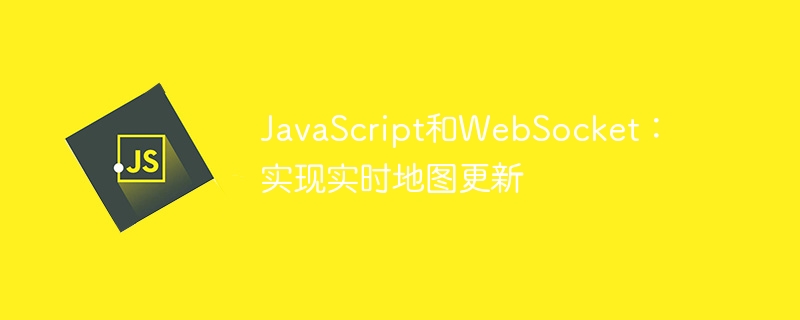Home >Web Front-end >JS Tutorial >JavaScript and WebSocket: Implementing real-time map updates
JavaScript and WebSocket: Implementing real-time map updates
- 王林Original
- 2023-12-17 14:06:49955browse

JavaScript and WebSocket: Real-time map updates
With the continuous development of Internet technology, real-time interaction has become an increasingly important requirement. In many application scenarios, real-time map updates are a common requirement. For example, travel applications, sharing economy services, etc. all need to display current location information and real-time changing data through maps. This article will introduce how to use JavaScript and WebSocket to implement real-time map updates, and provide specific code examples.
WebSocket is a full-duplex communication protocol based on the TCP protocol. It provides a method for real-time two-way communication on the same connection. Compared with traditional HTTP requests, WebSocket has lower latency and higher efficiency, making it very suitable for real-time data transmission.
First, we need to implement a WebSocket service on the server side. Here is a simple example using Node.js to create a WebSocket server:
const WebSocket = require('ws');
const wss = new WebSocket.Server({ port: 8080 });
wss.on('connection', (ws) => {
console.log('A client has connected.');
// 当有新的数据到达时,广播给所有连接的客户端
ws.on('message', (data) => {
wss.clients.forEach((client) => {
if (client.readyState === WebSocket.OPEN) {
client.send(data);
}
});
});
// 当连接断开时,打印日志
ws.on('close', () => {
console.log('A client has disconnected.');
});
});The above code creates a WebSocket server and prints relevant logs when the client connects or disconnects. When new data arrives, the server broadcasts the data to all connected clients.
Next, we implement the map update logic in the client page. Here is a sample code using JavaScript and WebSocket:
<!DOCTYPE html>
<html>
<head>
<style>
#map {
width: 400px;
height: 300px;
}
</style>
</head>
<body>
<div id="map"></div>
<script>
const map = new Map('map');
const socket = new WebSocket('ws://localhost:8080');
socket.onmessage = (event) => {
const data = JSON.parse(event.data);
const { lat, lng } = data;
map.updateMarker(lat, lng);
};
function Map(elementId) {
this.mapElement = document.getElementById(elementId);
this.updateMarker = function(lat, lng) {
// 更新地图上的标记位置
// 省略具体实现逻辑
};
}
</script>
</body>
</html>The above code creates a map object map, and updates the marker position on the map in the updateMarker function. When receiving new data from the server, the client parses the data and calls map.updateMarker to update the map.
It should be noted that the map-related logic in the above example code is not implemented in detail, it is just a simplified example. In actual applications, the corresponding functions need to be implemented according to the usage documentation of the specific map API.
To sum up, by using JavaScript and WebSocket, we can easily implement the real-time map update function. WebSocket provides an efficient and reliable two-way communication method, suitable for application scenarios with strong real-time interactivity. I hope the code examples in this article can be helpful to readers in actual development.
The above is the detailed content of JavaScript and WebSocket: Implementing real-time map updates. For more information, please follow other related articles on the PHP Chinese website!

